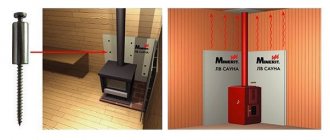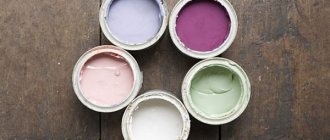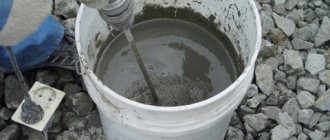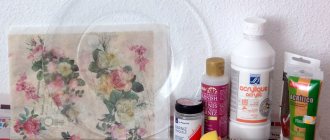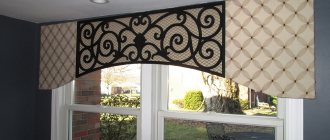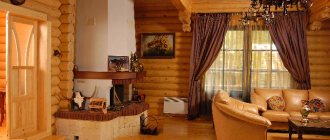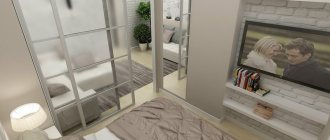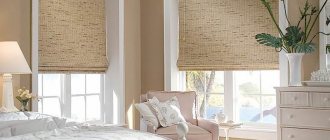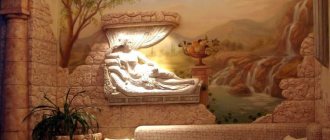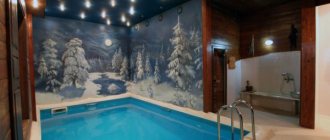Why is waterproofing needed?
For many people who are not involved in construction, water seems like a minor threat. And they have a very vague idea of what waterproofing is. Meanwhile, salts and minerals in water are real destroyers of building materials. Penetrating into their structure, water washes out the binding elements from them, causing microcracks and oxidation of metal structures. Wood absorbs water most easily, which causes it to rot and form fungus. Moreover, structures are protected not only from external sources of water. For example, in bathrooms, condensation can cause damage to walls no less than groundwater, with all the ensuing consequences.
In what cases is waterproofing used and its classification?
There are standards according to which it is recommended to use moisture protection. In order to decide which waterproofing to choose in a particular case, it is necessary to take into account all its operational properties, advantages and disadvantages.
According to their purpose, all types are divided into three classes:
- non-pressure – used for protection against so-called negative pressure, that is, moisture that acts on the material without pressure. Most often from flood and rain waters;
- anti-pressure – designed to protect the working surface from water acting on it under pressure (positive pressure). Most often these are materials that are applied to the outside of the structure;
- capillary - materials that protect porous materials from water, the structure of which tends to absorb moisture.
Now let’s look at what kind of waterproofing there is depending on the method of installation on the work surface, as well as its main technical qualities:
- roll;
- coating;
- penetrating;
- painting;
- mounted;
- sprayable;
- injection.
Roll (pasting)
Roll is the most common type of waterproofing, used on all types of building materials. Based on the installation principle, it is sometimes called pasting. This type of waterproofing is used for installation on both horizontal and vertical surfaces.
This material is produced in the form of rolls, on a dense base of which bitumen is applied. The basis of such materials can be made of cardboard (the most budget option), fiberglass or polyester (the highest quality). The first two types of base are simpler and more economical. Polyester is classified as premium.
The main advantages of this method of waterproofing include the cost-effectiveness and availability of materials. They can be laid on absolutely any horizontal or vertical surface. Rolled waterproofing has not only moisture-proof properties, but also resistance to aggressive environments. The disadvantages of this type of waterproofing include the difficulty in preparing the working surface, as well as high requirements for temperature conditions during installation. The surface on which rolls are rolled out must be flat and dry. Obvious disadvantages include the fragility of the material and its relative fragility.
Waterproofing works
Acrylic waterproofing is easily applied with a ready-made compound. The first layer is applied to a dry, cleaned surface. Acrylic waterproofing is done in several layers crosswise, which guarantees a durable coating. Acrylic waterproofing is quite caustic, so you should follow safety precautions when working with it. Acrylic waterproofing will not let you down and can be applied like paint.
Polyurethane waterproofing is produced using liquid materials mainly on the surfaces of facades or plinths. Polyurethane-based mastics can be used.
Latex waterproofing is used for treating pool bowls and also applies to paint waterproofing - the mixture is applied with a brush or roller. You can use built-up waterproofing.
Adhesive waterproofing
In this case, pasting the surface with waterproofing materials in rolls. Don't hesitate to use sticky tape. After all, we get a continuous water-repellent surface. The advantage of this type of insulation is its simultaneous thermal insulation property. This waterproofing on roofs can be done using a material such as coarse felt, which is glued to the base, but tape cannot be used here either. Repairing waterproofing in this case is complicated. Coarse-grained roofing felt is easy to use.
Self-leveling waterproofing
Used for roof insulation. It is a seamless polymer membrane. Waterproofing materials based on bitumen and thiokol with polymer additives are laid on an insulating base - fiberglass. Apply to floor slabs, cement surfaces, polystyrene concrete. The output is a continuous, smooth, jointless surface that looks like a rubber coating. In fact, this is a two-component waterproofing. The waterproofing coating successfully withstands temperature changes. There is no need to repair waterproofing.
Coating
This type of waterproofing is a layer of bitumen, resins or bitumen-polymer mastics that are applied to the working surface. Thus, a water-repellent protective layer is formed, mechanically preventing the penetration of moisture.
Coated waterproofing can be hot or cold. The first is solid pieces of bitumen, which must be heated before installation. As a rule, this is one of the types of construction waterproofing. The second type is ready-made mastics, based on one- or two-component compositions. Coating compositions can be used both as external protection and to protect the interior of the house, for example, a bathroom from flooding.
Coating mastics are considered a fairly cheap and affordable protection. They are distinguished by their ease of application, which makes it possible to use such waterproofing even for a person far from construction. This makes it one of the most common types of moisture protection. However, it has a lot of disadvantages. One of the main ones can be considered fragility and inelasticity at low temperatures. Over time, it begins to crack and peel, which leads to the rupture of the seal of the coating. Restoring such protection significantly increases its overall cost. But they are also demanding on the surface and air humidity. This also includes difficulties in installing hot bitumen associated with working at high temperatures.
For coating waterproofing
Can be used for structures not only made of concrete, but also of brick. The waterproof ball can be from 2 to 6 mm thick. Mixtures for coating-type waterproofing are divided into dry (one-component) and polymer-cement (dry mixture plus polymer solution).
Polymer mixtures for waterproofing are used in situations with an increased risk of cracks and deformations.
Penetrating
This method is based on the penetration of a waterproofing solution into the pores of concrete. There it reacts with its components, resulting in the formation of crystals. These crystals prevent water from penetrating into the concrete.
This protection is applied to a moistened work surface, due to which the solution penetrates 20-30 centimeters or more. At the same time, the structure of concrete is strengthened, its strength and durability increases. Thanks to this action, many builders consider penetrating compounds to be the best waterproofing for protecting walls and foundations from the inside of a room.
Impregnating waterproofing has many advantages. Thanks to the chemical principle of action, it effectively prevents the absorption of moisture into concrete. In addition to moisture protection, the resistance of concrete to low temperatures and mechanical stress increases. At the same time, the vapor permeability of the building material does not suffer. By strengthening the composition of concrete, the solution makes it more durable and gives it the ability to self-heal (when crystals break, new ones form).
All penetrating impregnations are absolutely environmentally friendly, which makes it possible to use such products for waterproofing indoor spaces and for sealing drinking wells. There are few disadvantages to impregnating agents. This is the ineffectiveness of using them on materials other than concrete (since the brick does not have the necessary chemical reagents, and, for example, the pores in aerated concrete are too large). And also the need for a large amount of water necessary for its better waterproofing.
Insulation materials
0 votes
+
Vote for!
—
Vote against!
It is necessary to protect from water all surfaces and structures that in one way or another may come into contact with water. In a country house this is the foundation, basement, roof. Inside a house or apartment there are bathrooms and toilets where leaks and flooding are possible. Inside the structure of the house, this may be insulation, which must be protected from condensation or precipitation. Please note that protection from water is necessary not only where its penetration is possible, but also where washing or condensation water can negatively affect the material of the structure. For this purpose, there are various types of waterproofing, which differ in purpose, place of application, and materials. Over the past decades, the market for waterproofing materials has expanded significantly, absolutely innovative solutions have appeared, but old methods of protection against water, such as laying roofing felt, have also not been forgotten. Among all the diversity, it’s not difficult to get lost. To make it easier to understand which type of waterproofing is right for you, we will try to classify all types, and also outline their purpose, the pros and cons of the technology and installation features.
- Types of waterproofing
- Coating waterproofing
- Pasted waterproofing
- Painting waterproofing
- Sprayable liquid waterproofing
- Penetrating waterproofing
- Injection waterproofing
- Superdiffusive and diffusion membranes for waterproofing
- Bentonite mats
Types of waterproofing
Before moving directly to listing the types of waterproofing, I would like to clarify a very important point. Why is it necessary to protect from water? Is this H2O really that scary? Of course, if you have knee-deep water in your basement, then everything is quite clear - you need to protect the basement from water penetration and plug the leak. Approximately the same principle is used when waterproofing a roof - the main task is to prevent leaks. But this is not the only problem that water can cause. For example, you can coat the inside of the basement with mastic, and the basement will become dry. But is this enough? Water does much more harm when it seeps into the structure of the material. Salts dissolved in water gradually destroy the material, reducing its strength and durability. Therefore, it is necessary to protect the basement from the outside, preventing water from penetrating inside the concrete.
And this is the basic rule that needs to be remembered - it is better to protect both the construction material and the room than just the room.
There are several classifications of waterproofing technologies: by the method of arrangement, by the main purpose, by the name of the materials used, as well as by the place and time of application.
Depending on the place of application, there is internal and external waterproofing. Obviously, internal waterproofing is a set of measures to protect against water, which is carried out indoors, for example, waterproofing walls and floors in a bathroom. External waterproofing is performed on the outside of the structure, for example protecting the foundation from groundwater or protecting the roof.
Depending on the time of application, primary and secondary waterproofing are distinguished. Primary waterproofing of structures is carried out immediately at the construction stage of the facility. Secondary represents repair measures. For example, if due to old age or for another reason the primary waterproofing is damaged and does not cope with its task, then a set of secondary waterproofing measures is carried out. In this case, the old coating is removed, the surface is thoroughly cleaned and a new waterproofing layer is applied. It is also possible to apply a new layer on top of the old one, but this is not recommended.
According to their purpose and characteristics, the following types of waterproofing are distinguished:
- Anti-pressure. It works "on pressure".
- Non-pressure. It works “on break”.
- Anticapillary.
- Sealing seams and joints.
- Superficial and complex purpose.
Anti-pressure waterproofing serves to protect against positive water pressure. For example, if the groundwater level around the basement is very high, then anti-pressure waterproofing is installed on the outside of the basement wall using materials that can easily withstand positive water pressure. Sometimes this technology is also called “pressure-acting”. This means that the weight of the water presses the waterproofing material against the walls. It makes no sense to use the same materials on the internal walls of the foundation, since the water pressure is different there.
Non-pressure waterproofing serves to protect against negative water pressure. For example, if due to heavy rainfall or spring floods water has accumulated around the foundation, then you can protect yourself from it from inside the basement. Its pressure is low and acts to “tear off” the material from the surface.
Anti-capillary waterproofing protects the construction material from rising moisture through capillaries. After all, many building materials absorb water, which then rises through the capillaries. Such materials include concrete and brick.
According to the method of arrangement, the following types of waterproofing are distinguished:
- Painting room.
- Coating.
- Plastering.
- Pasting.
- Cast or sprayed.
- Impregnating.
- Injection.
- Backfill.
- Mounted - protective sheets.
- Structural – additives to concrete during the construction phase.
- Various film materials - to protect insulation and roofs.
Next, we will analyze waterproofing technologies in more detail according to the method of arrangement, since they are the easiest way to determine the purpose and features of installation.
Coating waterproofing
Coating waterproofing is a surface coating with various mastics, one-component or two-component elastic compounds with a thickness of 2 mm to 5 - 6 cm.
Purpose . Used for external waterproofing of a building - treating the foundation to protect it from groundwater, treating a flat roof to protect it from precipitation. Also used for internal waterproofing - treating basement walls, treating floors and bathroom walls. Using coating waterproofing, cracks in the walls are closed. It is enough to remember how waterproofing of panel houses occurs. From the outside they look like boxes lined into rectangles.
Bitumen and all bitumen-containing materials are used as coating waterproofing.
Advantages. Cheap material.
Flaws:
- Bitumen becomes brittle at temperatures below 0 °C and loses its elasticity. Any deformation during periods of negative temperatures will inevitably lead to the appearance of cracks and tears, and over time the material will peel off from the surface. The service life of bitumen waterproofing is 5 – 6 years. Sometimes even 3 - 4 winter cycles are enough for the material to fail.
- Working with hot bitumen is dangerous. Possible injuries at work.
- Careful surface preparation is required. It is necessary to clean the surface of the base from dust, debris and build-up of mortar, and seal all cracks, potholes and sinkholes.
- Work can only be carried out in dry weather - the concrete must be dry.
- A high-quality primer treatment is required.
- It is necessary to protect the waterproofed surface from possible mechanical impacts - punctures and damage.
- Restoring coating waterproofing due to damage can cost 3 to 4 times more than the original application.
Conclusion: You can use coating waterproofing only when the likelihood of leaks is already low. For example, if the groundwater level is low, you can coat the foundation walls with bitumen, create drainage around the building and drain rainwater. The use of coating waterproofing on the roof is no longer relevant, since in frosty conditions the bitumen cracks, and the ice makes breaks in it with its sharp edges. As a result, by spring the surface is not airtight.
Please note that polymer resins, bitumen-polymer and bitumen-rubber mastics have appeared on the market, which can be applied cold. This method of application is easier and faster than hot. But the disadvantage of polymer mastics is the same instability to deformation. Any vibrations and mechanical stress will lead to cracks and tears.
Pasted waterproofing
Pasted waterproofing consists of roll materials glued to the base. Most often, materials are laid in several layers from 2 to 5.
Purpose . It is used only for external anti-pressure waterproofing. Rolled materials can be glued both to vertical surfaces - foundation walls, and to horizontal surfaces - the surface of a flat roof.
The most common materials for adhesive waterproofing are roofing felt, glassine, roofing felt, polymerized bitumen materials based on fiberglass and polyester, and rubber bitumen. For example, “Technonikol”, “Bikrost”, “Ruflex Grand”, “Gidroizol”, “Plastfoil”, “Stekloizol”, “Bireplast Norma” and others.
Modern materials with polymer additives are more durable, not susceptible to rotting and mold, unlike roofing felt, the cardboard base of which quickly fails.
Advantages . Pasting materials can be laid on concrete, metal, wood, old roll coating, flat slate, asphalt concrete. The materials are resistant to aggressive environments, moisture-proof and economical.
Flaws:
- Careful surface preparation is required. Irregularities larger than 2 mm are not allowed.
- Gluing and fusing of materials should be done with special care.
- The temperature during work should not be lower than + 10 °C (there are exceptions - elastomeric and thermoplastic materials).
- The coating can tear under the influence of mechanical loads or sharp objects, so it is advisable to protect it. In the case of waterproofing the foundation, a pressure wall should be made.
- The concrete surface must be completely dry when gluing. There is no adhesion with wet concrete.
- It is necessary to control the quality of all welds and material overlaps.
- The material must be glued in several layers. It is difficult to get around corners and complex terrain of the base.
Despite the disadvantages, modern roll materials based on polymerized bitumen are successfully used for waterproofing foundations and roofs. It is better if adhesive waterproofing is used in conjunction with other measures.
Painting waterproofing
Painting waterproofing involves applying liquid mastics in a layer of 3 – 6 mm. The resulting film has no seams and is quite elastic.
Purpose . Used for external and internal waterproofing. With the help of painting materials you can combat cracks in walls, their crumbling and erosion. Also, waterproofing a room from the inside can easily be achieved with similar mastics. For example, painting the floor and walls of the bathroom will protect your neighbors from flooding and the destruction of the wall material.
Materials : bitumen mastics with various additives from talc, asbestos, as well as mastics based on synthetic resins.
Advantages. Simple, cheap, fast, no special skills required to work with the material. The coating is abrasion-resistant and vapor-permeable.
Flaws . Durability - lasts about 5-6 years.
Sprayable liquid waterproofing
Spraying a water-based polymer-bitumen emulsion is also called “liquid rubber”. One-component and two-component compositions are applied using special equipment using a mechanized method - spraying.
Purpose . Roof waterproofing. Sometimes liquid rubber is used to waterproof basements from the inside, but this is wrong. Please note that liquid rubber is not able to withstand negative water pressure; it simply comes off the base. So spraying it in the basement is just a waste of money. If the water pressure is positive, such as on the roof, then you can safely use this material.
Materials . Synthetic rubbers. “Technoprok”, “Rapidflex”, “Elastopaz”, “Elastomix”, “Master Roof”, “Inopaz H2O” and others.
Advantages . When sprayed, liquid rubber fills even the smallest pores, creating an airtight coating. The surface is processed quickly due to the mechanization of work.
Flaws:
- A temperature of at least +5 °C is required.
- The coating is puncture resistant.
- Before application, the base surface must be dry and not frozen.
- Strong winds make spraying difficult. Work must be carried out in calm weather.
- High price.
- Difficult terrain requires more material consumption, which leads to an overall increase in cost.
- Work can only be carried out by specialists.
- Requires special expensive equipment.
- If the storage conditions of liquid rubber were not met, for example, it was frozen in a warehouse, then “sintering” of the molecules will not occur, and a porous pancake will form on the surface of the base, which simply will not perform its functions.
- Can only be used externally, it works “on pressure”.
Please note that waterproofing with liquid rubber is advertised in every iron; they offer it to insulate flooded basements. As you may have guessed, the coating will last no longer than one season, and the money will be wasted. Use liquid rubber only on external surfaces.
Penetrating waterproofing
Penetrating waterproofing prevents the capillary rise of water in the pores of concrete. The composition for application to the concrete surface is a mixture of Portland cement, finely ground quartz sand and active chemical additives. Penetrating waterproofing is applied to a wet surface, the composition reacts with water, resulting in the formation of crystals that fill all pores, cracks and capillaries and become part of the concrete itself, preventing the penetration of water. The depth of penetration of the composition into the thickness of concrete can reach 15 - 25 cm. Some manufacturers of penetrating materials claim that their composition is capable of penetrating 90 cm deep into the thickness of concrete.
Purpose . Penetrating waterproofing is used to treat concrete surfaces in basements. If it is not possible to dig out the foundation, then it can also be treated from the inside with a penetrating compound. Various concrete containers, such as silo pits, are also waterproofed with penetrating materials.
Materials . “Penetron”, “Peneplug”, “Penekrit”, “Maxplug”, “Hydrohit” and other analogues.
Advantages of penetrating waterproofing:
- All work can be done inside the basement; there is no need to dig up the foundation.
- There is no need to dry the concrete. The more deeply the concrete is moistened, the better the crystallization reaction will occur and the deeper the composition will penetrate.
- High-quality materials (“Penetron”) are able to penetrate to a depth of 60–90 cm into the thickness of concrete in a single layer.
- The material is protected from the inside, and not just from the outside. The penetration of water into the concrete is completely excluded.
- The composition has a “self-healing” function. If a crack appears in concrete, it is immediately filled with crystals.
- Long service life equal to the service life of the concrete itself.
- Concrete remains vapor permeable.
- The frost resistance and strength of the concrete itself increases.
- No additional expensive equipment is required.
- Treated concrete is not susceptible to mechanical stress. For example, if you need to clean out a silo with a metal scraper, you don't have to worry about damaging the waterproofing. Concrete can be drilled, dowels can be screwed into it, and other work that can be traumatic for concrete can be carried out.
- Environmental friendliness of the material. Can be used on surfaces in contact with drinking water.
- Some penetrating compounds can be used to seal gushing leaks.
Disadvantages of penetrating waterproofing:
- Only concrete, mortars, plasters and cement-based screeds of a grade not lower than M150 can be treated with penetrating compounds. Brick and stone are not susceptible to penetrating waterproofing.
- Work can only be carried out at temperatures not lower than +5 °C.
- Before starting work, it is advisable to remove all finishing and loose plaster right down to the concrete. It is also necessary to open all cracks and degrease the concrete surface if waterproofing old structures is being carried out.
- The concrete should be thoroughly moistened.
Penetrating (impregnating) waterproofing is more suitable for treating fresh concrete. Old concrete must be thoroughly cleaned and the surface degreased, since during use all the pores have become clogged. A sandblasting tool is used for this. Please note that penetrating waterproofing does not work on brick and stone.
Injection waterproofing
Injection waterproofing consists of injecting a repair liquid waterproofing composition into cracks, pores, joints and the thickness of the old crumbled material. Works not only on concrete, but also on brick, rubble and masonry.
Purpose . Waterproofing seams and joints at the junction of walls and soil, eliminating leaks in walls, increasing the load-bearing capacity and strengthening dilapidated foundations made of brick and rubble, cutting off capillary suction of water from the soil.
Materials . Acrylate gels, foams, resins, polymer compositions, rubbers, cement-containing injection materials and other materials. “Vitrapur”, “Vitracryl gel”, “Penepur Foam”, “Maxclear injection”, “Maxgrout injection”, “Manopur”, “PeneSplitSil”, “Manopox-S”, “Manopox-15”.
Advantages:
- There is no need to dig up the foundation.
- Works not only on concrete, but also on brick and stone.
- Works effectively when restoring waterproofing of various expansion joints.
- Eliminates capillary suction in brickwork.
- Ability to eliminate pressure and gushing leaks.
Flaws:
- High cost of materials and equipment.
- Complete dismantling of the finish is required.
- Work can only be carried out by specialists.
- It is necessary to know exactly the location of the leaks.
- The work represents a complex of complex operations in accordance with technological instructions and is used on an industrial scale.
The decision to carry out injection waterproofing can only be made by a specialist.
Superdiffusive and diffusion membranes for waterproofing
Superdiffusion membranes are a highly vapor-permeable material, the structure of which is reinforced with polypropylene fibers. Used for waterproofing pitched roofs and ventilated facades. These membranes can be laid directly on the thermal insulation material.
Diffusion membranes require two ventilation gaps: between the insulation and the material, as well as between the membrane and the roofing material.
Purpose . In pitched roofs, the use of superdiffusion membranes allows the use of lighter materials.
Advantages. The high vapor permeability of the membranes creates a favorable indoor climate, releasing steam from them. The walls or roof seem to “breathe”. They are very easy to install, last a long time, and do not require special attention.
Flaws . The pores can become clogged, which reduces the vapor permeability of the membrane. Not used with euro slate and metal tiles.
Bentonite mats
Bentonite mats are the so-called mounted waterproofing. The mats are granular bentonite clay sandwiched between two layers of cardboard or geotextile. Once installed on the surface that needs to be waterproofed, such as a buried part of the foundation, the cardboard decomposes, leaving the clay to act as a shield between the foundation and rainwater.
Bentonite swells after contact with water and turns into a gel. During the installation process, the mats are laid with an overlap, and bentonite granules are spilled at the joints.
This method of waterproofing has only one drawback - high cost. It can be used for waterproofing vertical and horizontal surfaces. For example, lay it next to the foundation of a house on the ground, preventing rainwater from seeping into the soil next to the house.
It is better to carry out all work on waterproofing a building or structure at the construction stage, taking care of the safety of the object in advance. For monolithic concrete construction, it is recommended to use special additives in concrete that increase its water resistance. The hydraulic additive "Admix" increases the water resistance of concrete from W4 to W18-20 and is used for the construction of critical facilities, and "Hydrohit" from W4 to W12 is used for non-critical facilities. Such additives differ not only in composition, but also in their principle of action. It is better to entrust the choice of this or that type of waterproofing work to professionals, especially if everything is not clear, such as with foundation waterproofing.
Painting room
This type of waterproofing includes bitumen mastics, rubber, and synthetic resins. Applied in several layers, it forms an elastic, seamless film that prevents moisture penetration. Such protection is used in both external and internal moisture insulation to eliminate already formed cracks and erosion. When it comes to the question of which waterproofing is best suited for a bathroom, preference is given to it. The advantages of painting waterproofing include its low cost, ease of installation and elasticity. There is only one drawback - it has a relatively short service life.
Types of waterproofing
What is waterproofing? The water and thermal insulation systems of a house are interconnected and enhance each other’s effect.
Two waterproofing strategies are used in construction:
- vertical;
- horizontal.
The vertical one is laid along the walls, its purpose is to prevent moisture from the soil or atmosphere from penetrating the wall. As a rule, this is external waterproofing.
Horizontal waterproofing of floor slabs should block moisture, which, due to capillary suction from the foundation, will threaten the walls or structures of the house.
External waterproofing is easiest to perform if construction is carried out on permeable soils (consisting of sand and gravel). Rainwater does not stagnate in them and the foundations of buildings are not exposed to prolonged contact with moisture. If groundwater occurs at a depth of more than a meter below the foundation level, it can be protected with light (anti-moisture) insulation.
For clay-based soils, the foundation requires moderate insulation and drainage. Clay allows water to pass through very slowly, although such soils may have sandy or gravel layers in their thickness.
If the owner of the house is unlucky and the building is located on an area with high groundwater, dense waterproofing will be the salvation:
- Lightweight built-up waterproofing (sometimes called anti-moisture insulation) protects the building only from ground moisture. Although in this case you can do without injection. To perform this, the surfaces are covered with bitumen mastic or a water-repellent mixture.
- The middle built-up waterproofing cuts off the building from sedimentary water seeping towards the foundation walls. It is made of roofing felt in several layers, water-repellent bitumen mastics, hydrophobic masses and membranes, resembling a rubber layer.
- The heavy insulation cuts off the groundwater that presses on the foundation, as in fusion. This ensures greater insulation strength. For this purpose, coatings are made from roofing felt or polymer membranes, reinforced coatings from synthetic resins.
Waterproofing of medium complexity is carried out by a regular construction team. If you need more complex work on a heavy type of insulation, the services of craftsmen will be needed.
Mountable
Installed insulation includes bentonite mats. They are clay of the same name, applied to a two-layer cardboard base. After installing such plates, the cardboard base dissolves. Concrete clay, coming into contact with water, forms a gel, creating a waterproof layer that protects the work surface from any type of impact. In addition to using bentonite slabs as horizontal and vertical moisture protection, they can be used instead of the standard foundation blind area to drain rain and flood water from the building. But bentonite has one significant drawback - its very high cost.
Sprayable
Sprayed types of waterproofing most often consist of polymer-bitumen emulsions. Due to their external similarity, such substances are often called “liquid rubber”. Since spraying withstands positive water pressure well, they are used to protect roofs. Using this option in basements works worse, since the water pressure from below simply peels the coating off the base and tears it. With proper waterproofing with liquid rubber, a solid, sealed coating is created, covering even the smallest pores of the material with a water-repellent layer.
Today, liquid rubber is a very popular method of moisture insulation, but it also has a number of disadvantages. This coating is resistant to mechanical damage, and is also very demanding on weather conditions during application (at low temperatures the substance thickens, and in strong winds it is difficult to spray).
In addition, there are also increased requirements for the working surface. It should be as dry, even and not frozen as possible. If there were temperature violations in the storage of the composition itself, then this material becomes unsuitable for use. Again, all the nuances of how waterproofing is done by spraying are known to professional workers. And only they have all the necessary equipment for this.
Types of waterproofing
Coating waterproofing
In this case, various liquid or semi-liquid compositions are used in the form of mastics, solutions (sludge), creating a continuous water-repellent coating.
Coating waterproofing is quite simple to perform and does not require special skills from the performer. Used as paint or rubber compound. Repair of waterproofing is carried out by simply renewing the layer. Cement-polymer waterproofing is also suitable.
There are mineral coatings based on Portland cement with the addition of polymers. They are a dry mixture for dissolution with water. They are also called “sludge”. The foundation walls are covered with this mixture until completely dry. After hardening, the coating waterproofing acquires the properties of stone and can withstand pressures of up to seven bar.
We also produce epoxy coating waterproofing for modern building protection. These compositions are more flexible and are applied to the walls in a thinner layer. With this method, water-repellent impregnation is created only on the upper thin ball of the structure due to capillary penetration.
Coating waterproofing is carried out in several thin layers up to 2 mm, just like applying paint. Each subsequent ball is applied after the previous one has dried.
Another type of coating waterproofing is bitumen mastics. These waterproofing materials are colored because they contain bitumen. To form a waterproofing coating, the wall is reinforced with a mesh, since the coating itself is thick, reaching 4 cm.
The composition of coatings includes polymer mastics with the inclusion of resins and MS-polymer (a hybrid of polyurethane and silicone) in the waterproofing composition. They are quite expensive, but have excellent quality of the created coating and durability. Coating is a very effective method of protection even if there are cracks in the foundation.
Plaster waterproofing is actually a subtype of coating waterproofing. For this purpose, two-component waterproofing based on a Ceresit mixture is widely used. Two-component waterproofing plaster is used mainly to treat foundations, facades, and plinths of buildings. Also, two-component waterproofing based on plaster mixtures can be used for interior work in bathrooms, kitchens, and for waterproofing swimming pools. Two-component waterproofing is beneficial where there is water in the premises.
When plastering waterproofing with waterproofing plasters, additional water-repellent impregnation can be applied. This additional protection of the plaster-based waterproofing creates a single, smooth coating. This is a transparent waterproofing based on liquid mixtures of liquid glass. There are two types.
Polycement waterproofing is carried out in case of concern that the waterproofing object may change shape. Also, polymer-cement waterproofing is used as a basis for installing heated floors. Cement-polymer waterproofing is used for interior work in rooms with high levels of dampness. Apply with a brush. It is better in such rooms than two-component waterproofing.
Coating waterproofing also includes elastic waterproofing - a two-component mastic based on polymer cement and acrylate resins, which will improve the protection of the waterproofing.
Might be interesting
Waterproofing
Foundation waterproofing: optimal choice of technology
Waterproofing
Clean water is the key to health, waterproofing concrete…
Waterproofing
Instructions for waterproofing a swimming pool
Waterproofing
Selection of materials, methods of waterproofing work...
Type of coating waterproofing
Elastic waterproofing is vapor-permeable, which allows it to be used both in waterproofing premises and external work. Easy to decorate. Elastic waterproofing has proven itself very well in insulating swimming pools and tanks. Elastic waterproofing requires cleaning of the coating before application. Elastic waterproofing will never let you down. Waterproofing repairs are also not required.
Rigid waterproofing
It is used where it is necessary not only to isolate the structure from water and moisture, but also to strengthen it. As a rule, these are foundations, plinths, fences. Waterproofing can be protected by reinforcement with metal sheets followed by waterproofing with a coating, or by plastering with compositions based on concrete mixtures or classic plaster. Like the first type of waterproofing, it is mainly done manually. This includes polymer cement waterproofing.
Painting waterproofing
One of the most affordable types of insulation. For this purpose, bitumen-based mastic with additives of talc, resins or asbestos is used. Painted waterproofing does not require special skills; it is applied like paint. In this case, the waterproofing layer also performs a fire-fighting function.
Can be used for both external and internal waterproofing work. Waterproofing materials are applied manually or using devices. In this method of waterproofing, layer-by-layer application of the composition plays an important role. There may be several, up to 4 layers. The total coverage area must be at least 7 mm. This waterproofing is a single film without joints or seams, like paint. There is also a spiky one.
Painting waterproofing includes treating floors in bathrooms or waterproofing terraces using mastics. Acrylic waterproofing is made with acrylic-based material in several layers.
Injection
The action of injection waterproofing is based on the injection of a liquid waterproofing composition deep into the material using special equipment. Unlike impregnating agents, these are not applied to the surface of the concrete, but directly deep into the building material through large pores, seams or cracks. Thus, the material is protected more deeply. This method has proven itself in eliminating concrete defects, sealing joints, and also in restoring old foundations.
Unlike the penetrating method, the injection method of moisture protection is not limited in its use only to concrete. It is also effective on brickwork. Its advantages include the ability to eliminate even gushing leaks under pressure.
However, it is worth remembering that only a specialist knows how to properly perform waterproofing using the injection method to decide on the feasibility of this method. And it is unlikely that the average person will have the necessary equipment for this. Another disadvantage of this approach will be the complete dismantling of the surface finish.
Penetrating waterproofing
Penetrating mixtures are used for waterproofing various types of structures made of concrete and reinforced concrete. It is undesirable to use them in combination with gas and foam concrete and brick. The main difference between penetrating compositions is the formation of a moisture-proof barrier in the thickness of the concrete structure, and not on its surface. Such mixtures penetrate into the insulated material to a depth of 40 cm.
In addition, they increase its frost resistance, strength and sulfate resistance, without reducing its ability to pass air. Therefore, it is the most popular mixture for waterproofing concrete.
Speaking about the scope of application, penetrating compounds can be used for waterproofing tanks, tunnels, dams, building foundations, loggias and bathrooms.


